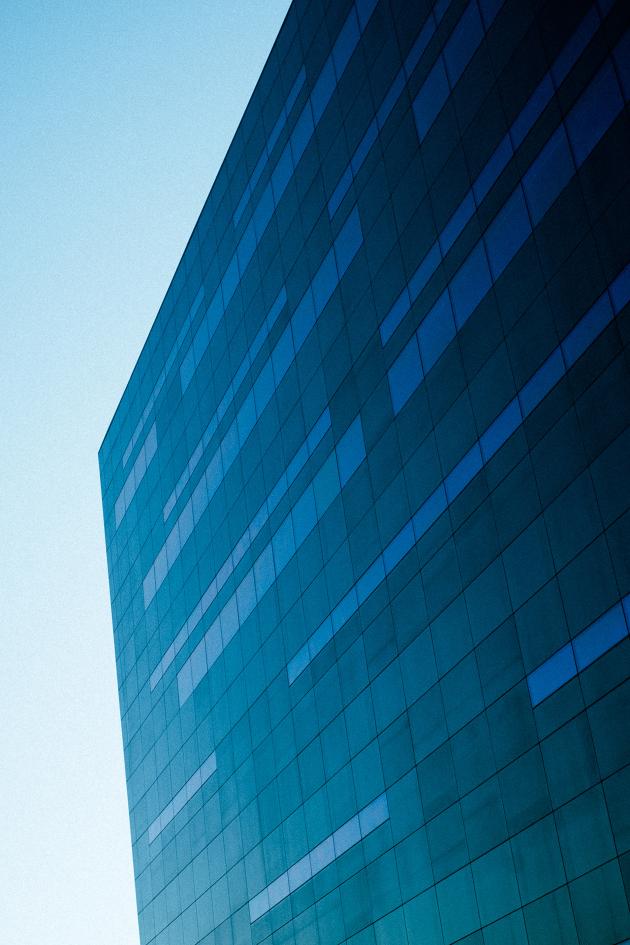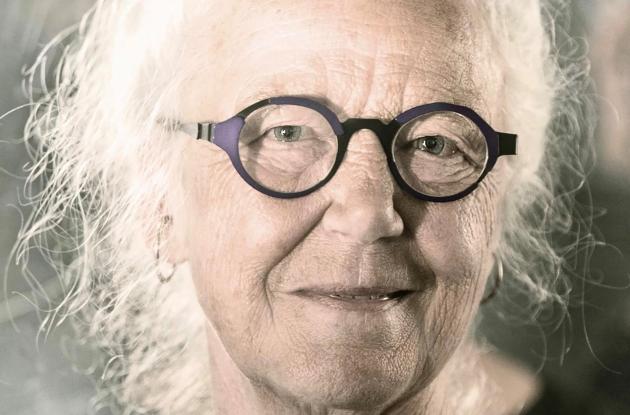Crooked and wonderful
Former Culture Minister Jytte Hilden takes us on a journey from when the idea of the Diamond was born until today.
Crooked and beautiful, The Black Diamond lies on the waterfront, it signals secrets and competence. People who pass by, walk by, drive by or sail there, they probably wonder what kind of house it is, who lives there? The answer is quite simply books. Lots of books, ancient, brand new, huge and very small.
Here lies Royal Danish Library. A place where you can read and learn. There are students here, curious tourists, but there is also much more happening with international debates and authors from all over the world, classical music, tasty dishes in the gourmet restaurant, meetings, hiding places and so on and so on.
The history of the place is like a fairy tale by Hans Christian Andersen. That's what the Queen said when she officially opened the building 25 years ago. And we can't get enough of adventure in a world that tilts, while Earth continues to spin round and round despite war, climate and grievance. The adventure keeps the dreams going. We need them, and The Black Diamond can provide that.

Photo: Malthe Ivarsson
1986 — debate in a basement
The research librarians held their annual meeting and had invited two parliamentary politicians to talk about visions, one from the blue room and one from the red room in a fine balance. Royal Danish Library had just had a new chief executive, so curiosity was high, the debate became wonderfully heated, and it continued well into the night. It was a memorable meeting.
As a social democrat myself, I was interested in wider access to the hallowed halls of culture. It ended up with a desire for cartoons like Donald Duck - my political conservative counterpart would only reserve the shelves for scientific works such as encyclopedias from the Enlightenment. There is a long way from one to the other.
The newly appointed chief executive wanted more space, a new building and a library that could do so much more. A clear vision that just needed money. Everyone who was there that night long, long ago smiles at the discussions that night. The chief executive and his vision won in the long run.
1993 — international competition
Money for a new building was found at Christiansborg and put into the Finance Act. Copenhagen was supposed to be a European city of culture, many fine guests would come here and with fine guests along the way, you paint your fence, polish windows and build new houses. An international architectural competition was announced, there was great interest in the task. 179 design studios from all over the world put in bids for the task.
It was four young architects from Aarhus who won. Schmidt, Hammer and Lassen designed a black building with crooked angles, clad in black granite from Zimbabwe. Exceptional. The judging committee consisted of librarians including the second in command from the British Library and Danish architects with a foreign background, Kjetil Thorsen from Snøhetta in Norway.
He has since been behind the Opera in Oslo. Here he played an absolutely decisive role for the final result. Great. When we presented the chosen project in Bella Center, I as Minister of Culture said almost spontaneously: I think it looks like a black diamond
. Points! That became the name, and there are black diamonds, because I am a trained chemical engineer.
1996 — foundation stone laying
The extension, as it is, was not finished at all for the cultural city visitors, but the foundation stone was laid on 7 October 1996. Chief executive Erland Kolding Nielsen, Lord Mayor Jens Kramer Mikkelsen, architect Bjarne Hammer and Minister of Culture Jytte Hilden were present. Exactly by the book. It is rumoured today that it has been forgotten exactly where the foundation stone actually is. Maybe a little embarrassing.
The library will be exposed like never before
1998 — more debate
The administrative top of the library thought and thought about the future as construction progressed. The top held a multi-day meeting about the plans with the many new tasks and the many different functions in mind. What was going to happen? What would happen? How do you prepare for new times?
I, who had in the meantime been kicked out of Parliament, was invited along as a guest to deliver visions, what did I think would happen? My answer was simple: The library will be exposed like never before
. A quirky and beautiful very different building, new tasks far from traditional library functions, I repeated that message continuously. There was not immediately much support for that interpretation. It should work, just with more space, was the conclusion.
But the end of the story was that the library advertised for a cultural manager position. My message had made an impression anyway, I applied for the position and got it. That my professional career should become Royal Danish Library! It was not sung over my cradle. But that's how it turned out. Not that crazy at all.

Jytte Hilden
Jytte Hilden (1942) is a former minister of culture and The Black Diamond's first head of culture. She is a chemical engineer from Denmark's Technical Institute and has been a high school teacher and later principal at Roskilde Cathedral School as well as a member of parliament for Socialdemokratiet. She has been married three times and has four children, six grandchildren and one great-grandchild. She lives at Vesterbro in Copenhagen.
1999 — official inauguration
In September came the big day with the opening and dedication of the new building called The Black Diamond. A big moment, a gigantic moment. Everything was prepared down to the smallest detail, guests invited from near and far, from the whole country, in fact from all over the world. We were all set up for a party. That particular autumn was more than a heat wave. All the windows were open, the weather gods were with us, the sun was shining despite all the trouble, we believed in it all. Now the dreams had to unfold. The interest was not just great – it was overwhelming.
There it stood, a crooked, funny, black building in the middle of Copenhagen between Langebro and Knippelsbro. Exactly where ships used to anchor and load sugar. The Queen came by, the inauguration was adventurous, the director proudly strode through the building with the majesty at his side. He almost completely forgot to stop for a bit so that the many photographers could get pictures. Never mind. It was all so overwhelming.
Everyone came by. The building, the architecture, the debates, the new tasks became world-famous in a split second. The whole globe would play with us, be part of the future. Close to a new millennium, close to a new way of understanding books, libraries and communities. Close to a vision of a house of books, debates and music. The name The Black Diamond was translated into all languages. We got quirky descriptions from all over the world. Black and Diamond are available in all languages. The Black Diamond, Der Schwarze Diamant, El Diamante Negro, Den Svarte Diamanten and so on. Way to go.
But it was certainly not everyone who liked all the new things. Some of the former privileges disappeared like dew before the sun, the old users thought. Learned men with PhD gold rings on their left index fingers found it difficult to accept new ways for a royal library. The youngsters loved it. Criticism was written about the bookshop, the canapés, the music in the Atrium, so the daily newspaper Politiken sent a journalist to work in The Black Diamond for a whole week to report on the atrocities.
However, it was hard to find people who weren't excited. A young woman sat with her bare legs completely visible and beautiful in the large reading room, when the journalist asked if she was not disturbed by all the activity, she replied: I love when people can see me
. The generation from the recreation centres loves when something happens, they can concentrate everywhere.
2024 — anniversary
In just a quarter of a century, an honoured national cultural institution for the few and perhaps super-smart has changed into a meeting house for the whole world. Guests come from Svendborg, Skive, San Francisco, Singapore and South Africa. The zeitgeist has changed, yes, but measured by my cubit, then there must be brave people to seize time, challenge it and open new horizons. Otherwise we humans degenerate. And that won't do.
Honour the one who should be honoured: executive chief Erland Kolding Nielsen, he had a dream. He is no longer here, but the dream turned into a little adventure in an instant, and now "the black diamond" stands there on the waterfront forever. After all, eternity and the moment have in common that they neither begin nor end. History should remind us that time is passing and it is passing fast, so jump mate; the future is after you.
Way to go!
